Most customers believe that good customer service begins when they call your call center. In fact, 73% of customers believe that valuing their time demonstrates excellent service. As a result, your contact center agents must respond to calls and resolve inquiries as soon as possible.
Addressing how call avoidance behavior or representatives not answering calls can impact customer relationships as well as the company’s reputation. In this article, we will explore all about call avoidance in call centers and some of the most prominent ways to tackle it. Let’s get started!
Form a dedicated call avoidance call center team with representatives from the marketing, customer service, and product departments. This group needs to look into the underlying reasons for the high call volumes and come up with creative fixes. Encourage a culture of creativity and collaboration to explore new ideas and methods and assess their efficacy.
What Is Call Avoidance in Call Centers?
Call avoidance in call centers refers to deliberate actions taken by agents to avoid answering calls. This is sometimes due to physical tiredness, time limits, or a refusal to deal with tough clientele agents avoiding calls. Because of their compensation scale, some agents may decide not to answer calls after fulfilling their quotas.
Call avoidance strategies can take many forms. Hanging up the phone, transferring calls to other agents, taking long pauses, remaining in conference mode, and accepting calls via voicemail are just a few examples. Agents can also extend calls to avoid having to handle more.
These actions may have a negative impact on both the company’s reputation and customer satisfaction. Consumers expect timely service, which is hampered by call avoidance call centers. In order to maintain excellent client relationships and provide exceptional customer service, it is imperative to recognize and address call-back avoidance behaviour.
3 Ways Call Avoidance Can Hurt Your Business
Avoiding phone calls can have multiple adverse effects on your business. Understanding them is critical for businesses seeking to maintain customer satisfaction, capitalize on sales opportunities, and foster a positive work environment. Some of the most common consequences include:
1. Reduced Employee Morale
Avoiding calls on a regular basis can be detrimental to employee morale and create a stressful work environment, which can lead to burnout, lower productivity, and higher turnover rates. This behaviour could also indicate a lack of trust in one’s ability to communicate or knowledge of the company, resulting in disengagement.
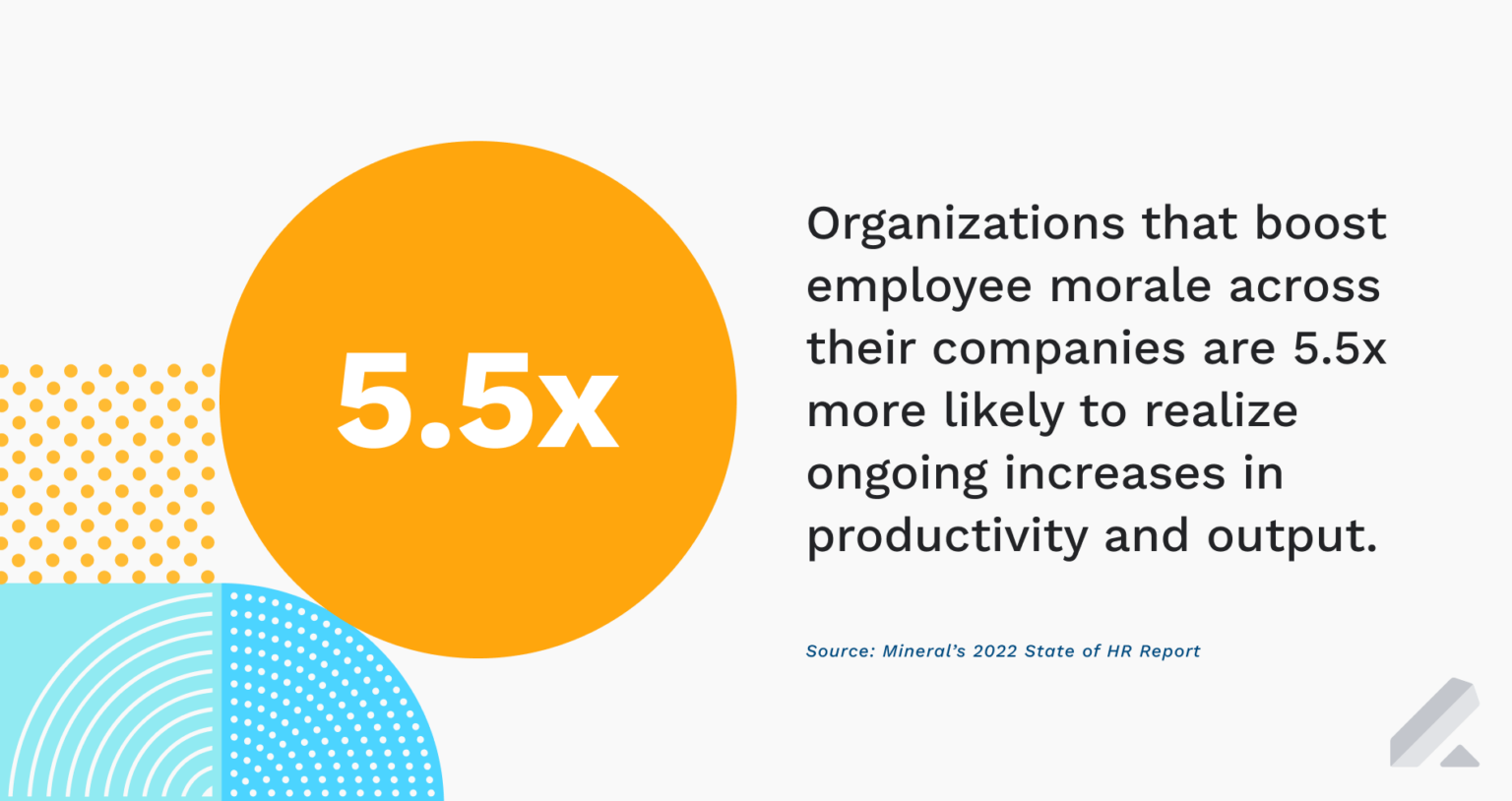
Assisting when handling calls raises spirits and confidence. Productivity and job satisfaction are directly correlated with a positive work environment where employees feel competent and motivated. According to research, companies that raise employee morale are 5.5 times more likely to boost productivity.
2. Decreased Customer Satisfaction
Not answering calls lowers customer satisfaction. Customers expect to receive prompt responses to their inquiries and complaints. Call avoidance call centres result in longer wait times and customer dissatisfaction. If clients feel ignored or receive delayed responses, they may form a negative opinion of your organization.
Customer dissatisfaction may lead them to switch to competitors, which will harm your company’s reputation. Trust and brand loyalty may gradually decline. To build long-term relationships with your customers, respond to all correspondence, including phone calls, promptly and courteously.
3. Missed Sales Opportunities
Missing calls can lead to lost business opportunities. Prospective clients contact us to make purchases, obtain information, or ask questions. There is no way you can convert these calls into sales if they go unanswered.
This may have an impact on your income and future growth. Every unanswered call could cost you a client who would otherwise go with one of your competitors. Making sure your staff is prepared to answer phones and assist potential customers is critical to seizing these opportunities.
With CallHippo
- Smart DID Routing
- Automatic Call Distribution
- Call Center Analytics
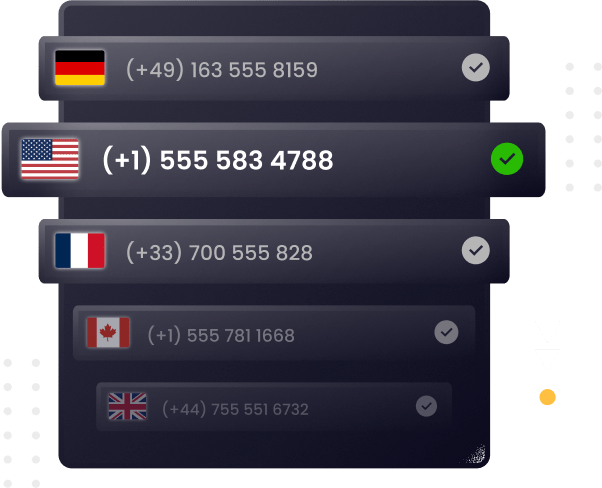
10 Tactics for Reducing Call Avoidance in Call Centers
Reducing call avoidance is necessary for improving call center efficiency and customer satisfaction. Below are some of the most common ways to tackle call avoidance; let’s take a closer look at them!
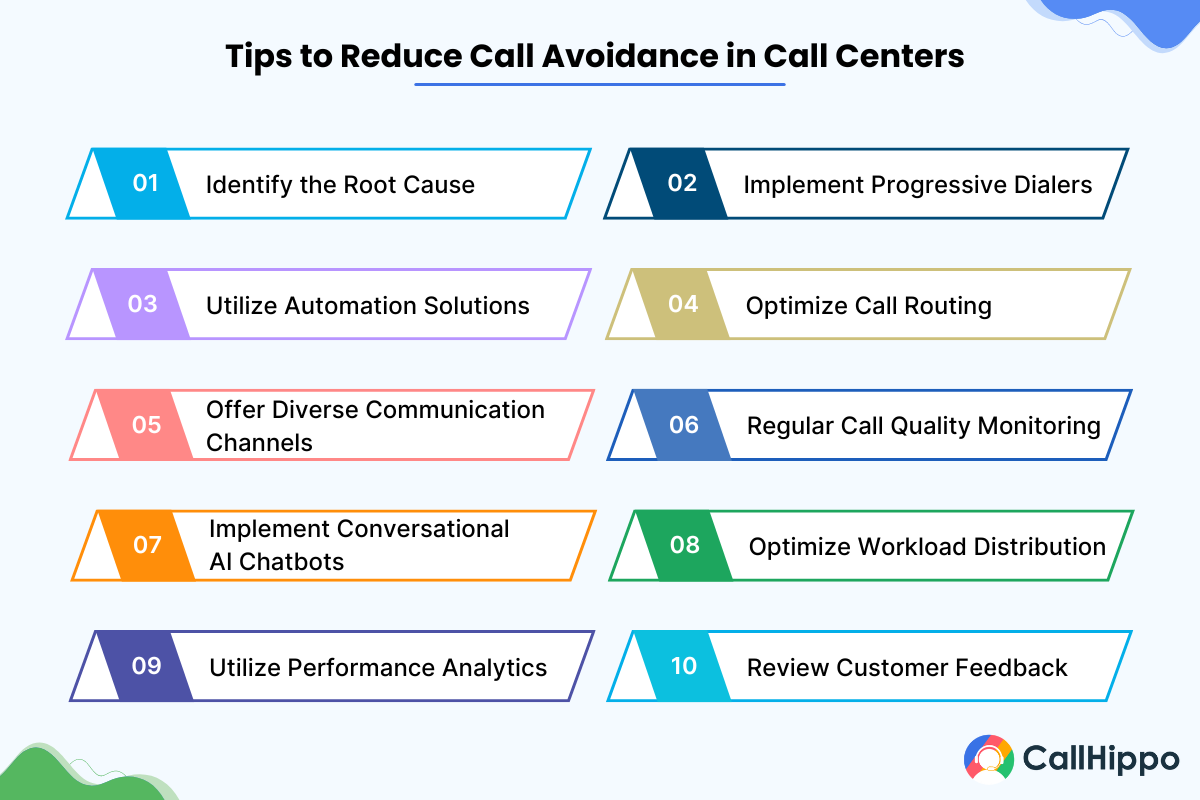
1. Identify the Root Cause
To improve call center performance, problems such as long wait times or complex IVR systems must first be identified using survey and feedback analysis. Create custom solutions to address these issues, such as better call routing or training.
It’s critical to understand that agents may decline calls due to difficult circumstances rather than simply being lazy. Instead of blaming agents for being unable to perform due to illness or fatigue, it is critical to provide empathy and support.
2. Utilize Performance Analytics
Performance analytics offer vital insights into call center operations. Call centers may minimize call avoidance by evaluating indicators such as average call duration, volume, and first-call resolution rates. Metrics like average handling time, call transfer rates, and abandonment rates might assist in uncovering call centre leaders of avoidance behaviours. Advanced reporting provides real-time notifications for preemptive intervention, improving overall call center performance.
3. Utilize Automation Solutions
For contact centers, automation is a great tool because it streamlines operations and lowers call avoidance. Call centers increase efficiency and satisfaction by using automated systems to update customer information and process transactions.
Automation further reduces the need for face-to-face customer-agent interactions by providing self-service options like automated answers to commonly asked questions. Automation tools can be used to handle repetitive tasks, freeing up agents’ time to handle calls and lowering avoidance.
4. Optimize Call Routing
Effective call routing ensures that calls are routed to the most appropriate agent, thereby reducing call transfers and wait times. Implementing skills-based routing, which directs calls based on agent expertise, can improve first-call resolution rates while decreasing call avoidance.
Furthermore, intelligent call routing algorithms can help prioritize calls based on urgency or importance, ensuring that critical calls are handled quickly. Call centers can increase efficiency and reduce call avoidance disciplinary action by optimizing automated call response systems and routing protocols.
5. Offer Diverse Communication Channels
Reduce the need for phone calls by expanding customer contact channels to include social media, chat, and email. This diversification eventually reduces wait times while also improving the process, lowering call volume, and increasing caller satisfaction.
In order to provide seamless service, expand the number of channels you provide, such as social media or live chat, and train your agents on cross-channel communication. This approach reduces call center traffic and improves responsiveness while taking into account a variety of preferences.
6. Regular Call Quality Monitoring
Call quality should be monitored on a regular basis to identify areas for improvement in call centers. Consistent call review enables centers to identify trends, address common issues, and provide agents with tailored training. This process not only reduces average handle time but also decreases call avoidance.
Inefficiencies in the call center system that might be causing call avoidance can also be found with the aid of call quality monitoring. Call centers that regularly monitor call quality can significantly improve overall performance, resulting in increased customer satisfaction and operational efficiency.
7. Implement Conversational AI Chatbots
Chatbots automate tasks like FAQs, order updates, and account inquiries, resulting in fewer calls to live agents. This diverts non-urgent calls, reducing the workload of agents.
Additionally, chatbots can offer 24/7 support, saving clients from having to wait for a live agent to assist them when they need it. Conversational AI chatbots can help call centers become more efficient, handle fewer calls, and provide a better overall customer experience. Also, 84% of businesses do believe enhancing the customer experience can increase income.
8. Optimize Workload Distribution
A balanced workload is necessary for agents to reduce call avoidance. By ensuring that operators are not overloaded with calls, call centers may improve agent performance and reduce consumer wait times.
This may be achieved by implementing efficient scheduling practices and monitoring workload in real-time to allow for necessary adjustments. By distributing workload efficiently, call centers may improve agent morale, reduce agent fatigue, and improve the customer experience overall.
9. Implement Progressive Dialers
Progressive dialers automate dialing by routing answered calls to available agents, saving time and decreasing wait times. This increases productivity, shortens call wait times, and decreases call avoidance. By distributing calls equitably and boosting productivity, progressive dialers improve call handling and decrease call avoidance.
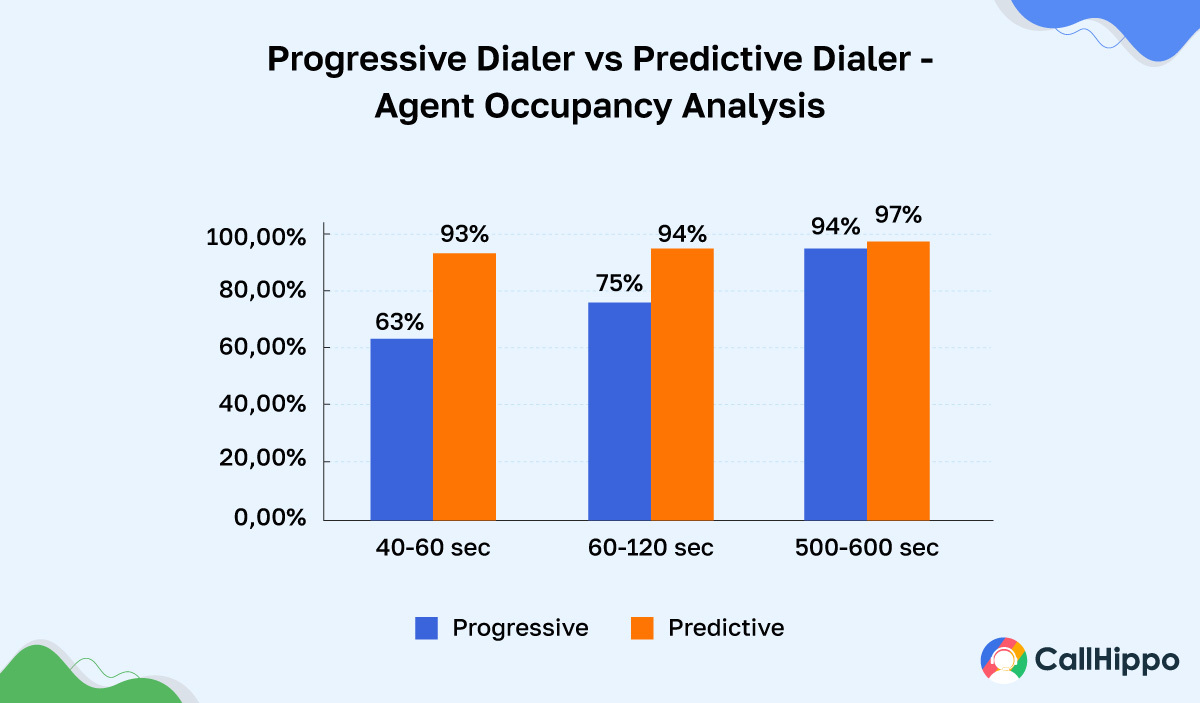
By dialing numbers based on agent availability, these systems reduce the idle time between calls, keeping agents engaged inbound calls and decreasing the temptation to avoid incoming calls. This improves efficiency and creates a more dynamic environment, keeping agents focused and productive.
10. Review Customer Feedback
Consumer feedback is a valuable resource for determining what issues cause people to skip calls. Through regular feedback reviews, call centers can learn about their customers’ preferences and expectations, allowing them to make better business decisions.
If call centers receive feedback that wait times are excessively long, they can focus on reducing them. Proactively responding to customer feedback improves operations, reduces call avoidance, and increases customer satisfaction and loyalty.
What Are the Strategic Advantages of Call Avoidance in Organizations?
Call avoidance action plans can provide organizations with numerous strategic advantages. Some of these include:
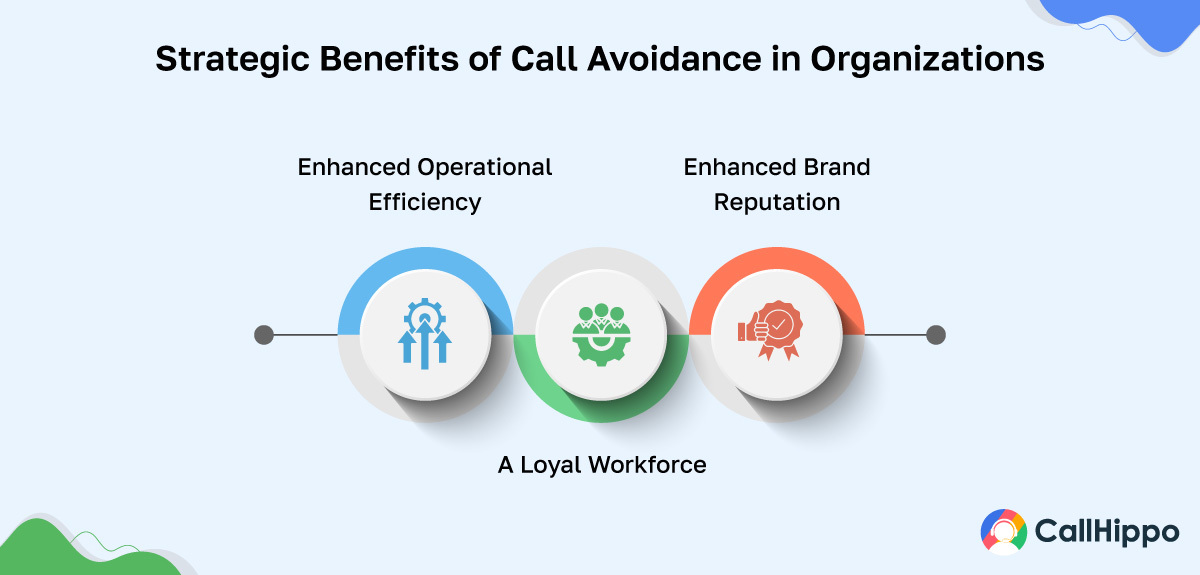
1. Employee Retention
Employers must maintain their personnel, particularly in industries where experienced employees are highly valued, such as call centers. Employee turnover creates significant challenges, including the cost and time required to identify and train replacements.
As new hires adjust, business performance may temporarily fall. Reducing the number of calls by implementing a strategy can significantly improve worker retention. This technique addresses the underlying causes of high call volumes while showing employees that their contributions are valued.
2. Improved Brand Image
Reduced call volumes can significantly improve a company’s reputation. Shorter wait times and improved service for satisfied customers lead to positive word-of-mouth, increased brand awareness, and more loyal customers.
This kind of word-of-mouth advertising is quite effective in bringing in new clients and keeping hold of current ones. Moreover, a strong brand image can provide the business with a competitive edge in the marketplace, which will eventually boost sales and profitability.
3. Increased Operational Efficiency
Operational efficiency is critical for the success of any business, particularly in a call centre where operations rely heavily on employees. Businesses can improve operational efficiency by reducing the number of calls while still addressing the demands and issues that call center operators face.
Providing dedicated training can make employees feel more content and engaged, leading to increased productivity and efficiency. This can result in simpler operations, lower costs, and better overall performance.
How to Draft and Implement an Effective Call Avoidance Policy?
Developing and implementing an effective call avoidance call center policy is essential for improving customer service and operational efficiency within your call center environment. Here’s how you can do it:
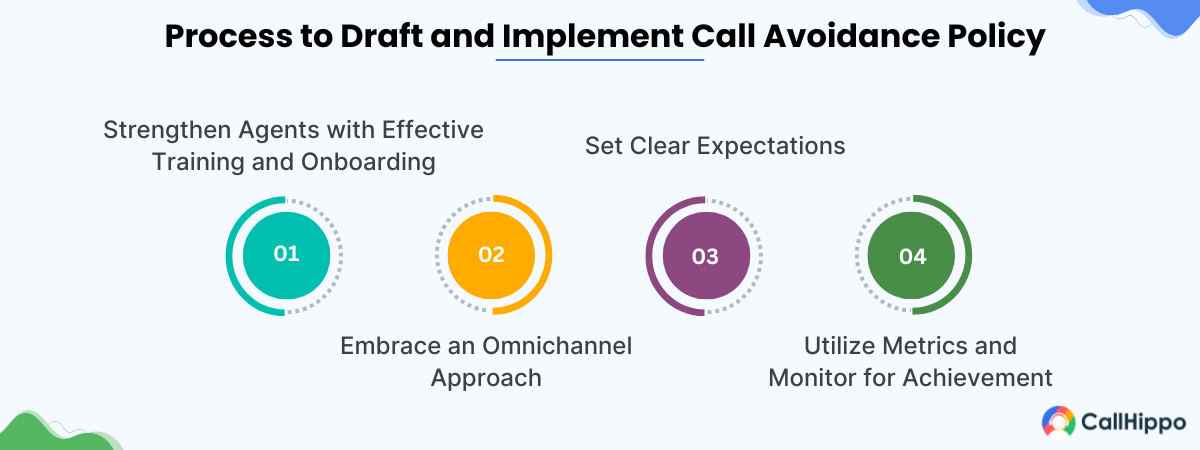
1. Strengthen Agents with Effective Training and Onboarding
A successful call avoidance strategy relies heavily on ensuring that your representatives are properly trained and informed about your company’s products, procedures, and services. A thorough training program is required to equip new agents with the confidence and effectiveness to handle a variety of customer calls and inquiries.
This training should include comprehensive information about your clients, the services you provide, and effective methods for responding to various types of inquiries. Providing extensive training and onboarding for your agents improves their performance, which improves the overall customer experience.
2. Embrace an Omnichannel Approach
An omnichannel strategy can reduce the strain on your call center agents and help prevent call avoidance by providing customers with an additional avenue to contact your business.
This approach makes use of a variety of communication channels, including social media, email, and chat, to give customers a consistent experience. Using an omnichannel strategy reduces incoming call volumes and balances the workload, which enhances agent productivity and customer satisfaction.
3. Set Clear Expectations
Clear expectations must be set for both agents and clients in order to facilitate easy communication and efficient call management. To ensure that the relevant agent is reached quickly and efficiently, create a clear client route.
Give agents instructions on how to handle certain scenarios and answers to queries. Unnecessary calls are decreased, and the customer experience is improved with clear expectations.
4. Utilize Metrics and Monitor for Achievement
When evaluating and refining your call avoidance policy, tracking key performance indicators (KPIs) is crucial. You can obtain important insights into the effectiveness of your policy by defining metrics like call volume, duration, and customer satisfaction scores.
You can pinpoint areas for development and make well-informed decisions to maximize your call avoidance strategy by routinely tracking these metrics. You can improve overall performance and guarantee a better customer experience with this iterative refinement process.
By implementing these strategies, you can create a more effective call avoidance termination policy that reduces unnecessary calls, increases agent productivity, and improves customer satisfaction.
Conclusion
Call avoidance, whether intentional or part of a customer service strategy, poses challenges for call centers. To address this issue, businesses can improve self-service options and provide agents with the resources they need to handle calls effectively.
Finding the right balance between meeting customer needs and supporting contact center agent well-being is critical. Call centers that use these strategies can improve customer satisfaction and create a positive work environment for their agents.

Subscribe to our newsletter & never miss our latest news and promotions.









